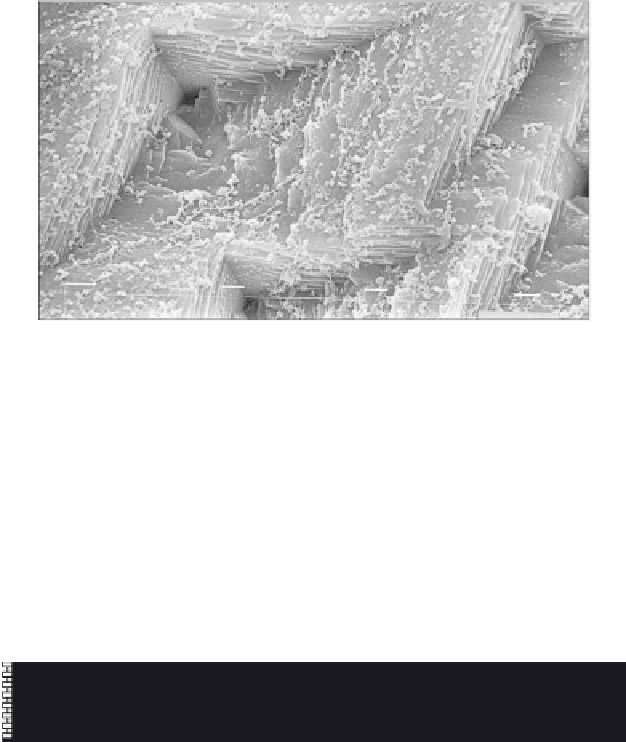Geoscience Reference
In-Depth Information
(in aggressive environment) or to attack them (in mild environment), (5)
the crystal face in question is important because certain faces of calcite
are attacked 15 times faster than others, and (6) lastly, and obviously, the
process is influenced by the duration of the dissolution experiment. Thus
nearly 40 different kinds of dissolution have been enumerated (Delmas
et al.
1987). Figure 7.10 is just an example, albeit characteristic.
Fig. 7.10
Dissolution of a face of a calcite crystal. Successive crystalline planes are loos-
ened in a sort of cut pyramid the base of which is not square but rhombic (120° and 60°
angles). The faces of the pyramid are asymmetrical: on two faces the penetration is vertical
or out of true (
acute pit edge
) and on two it is gently sloping (
obtuse pit edges
). On the crystal
surface, the appearance of the attacked face corresponds to the microshapes of tempo-
rary recrystallization. This has been observed in many trials. Magnifi cation: ~2000×.
Photo
:
A. Guyon and H. Chamayou.
As dissolution continues, the cut pyramids become closer: they end
up joined together, forming sharp uneven points (Fig. 7.11). The processes
are fast; a few seconds are sufficient for corrosion at atomic scale of a
crystal to begin.
Strongly dissolved calcite
Slightly
dissolved cal
cite
calcite
Acute pit edge
Obtuse pit edge
Fig. 7.11
Variation in forms of dissolution of calcite. Progress from local corrosion to general
corrosion leads to inverted relief (isolated incisions
Æ
areas covered with points). Between
the two occurs an intermediate stage of small plateaus separated by fi ssures.
On much larger scale, it is seen (Fig. 7.12) that karsts differentiated
on the earth's surface are more angular than those formed below a soil
cover (slower hydric flow) and then loosened (Legros 1992).



















































































